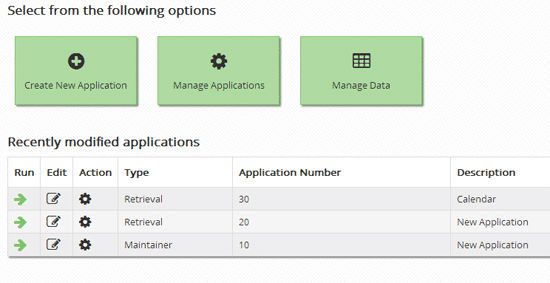 Summary: Why is usability so important? Without it, your application will get abandoned. All of the time and effort put into that application will be for nothing. In this article, you’ll learn a few usability trends you must adopt in your web application development over the coming months.
Summary: Why is usability so important? Without it, your application will get abandoned. All of the time and effort put into that application will be for nothing. In this article, you’ll learn a few usability trends you must adopt in your web application development over the coming months.
What is “usability?”
It’s a broad term, but we can boil it down to two key points:
First, it refers to ease of use and learnability. How quickly can a user learn the interface? Will it confuse them?
Second, it refers to utility. Does it meet the user’s needs? Does it do what they expect it to do?
You can’t have one without the other. A simple interface without utility is worthless. Likewise, a useful application without a simple interface won’t get used.
Why is usability so important?
If your web application is difficult to use, users will leave. If it frustrates users, they will leave. If it doesn’t meet their needs, they will leave.
So, why is usability so important? Without it, your applications won’t get used. An unused application is a worthless application.
How can you improve web application usability? In this article, we’ll cover a few modern usability trends that you can’t ignore. These trends will impact web development usability both this year, and in the near future.
1. Multi-screen design
We’ve entered the multi-screened era. You no longer know how a user will access your web application.
Will they use a smartphone? Will they use a PC? Will they use a tablet?
You don’t know, and you can’t control it.
What can you do? Any web application you create must now adapt to any screen or device. No, I’m not talking about creating separate native applications for mobile devices. I’m talking about creating apps that adapt to the new, multi-screened world.
So, how do you go about creating an application for different screen sizes? After all, you can’t possibly fit everything on a PC-based web app into an app for smartphones. There isn’t enough room on the screen.
What’s the answer? This need for apps that adapt to a variety of screen sizes is driving a concept known as “mobile-first” design. As explained below, it means that you develop for the smallest screen size first, and work up from there.
“Mobile first design and UX has been a very good and positive trend in web app development,” says John Turner, CEO of UsersThink. “Because smartphones and small tablets have grown so much in popularity, making sure web apps work on all types of devices has become very important. And due to the limited screen size of small devices, a greater emphasis on focus and reducing complexity has become a much higher priority. But that’s also lead to web apps becoming much easier to use on desktops and laptops, as UX and usability has become paramount for business success.”
2. Simple interfaces
Does it ever feel like attention spans are declining? It’s true. According to these statistics, the average attention span has dropped by 4 seconds over the last 13 years.
In fact, we now have shorter attention spans than your average goldfish.
What does this mean for web application usability? Users need simple interfaces. Most won’t take the time to figure it out if they find it confusing. Most won’t take the time to dig around a cluttered interface.
Get down to the basics. Who are your users? What are they trying to accomplish? Focus your web app on those two questions, and remove the excess.
“Simplicity and frankness have become the undertone of good web app interfaces,” says Raffi Semerdjian, Senior Designer at Digarati. “Consolidate your channels – the hand has only five fingers – and most people only use their thumbs. Good web apps offer users the ability to engage with content rhythmically and are designed to discourage an off-beat experience. In other words, don’t make it a challenge for a user to get what they want; don’t let your users feel incompetent – it only means you didn’t plan smart!”
3. Prominent calls to action
We’re seeing larger, more prominent buttons in web apps, and that will only continue. Why? It’s driven by a couple of factors.

Second, it’s simpler for the user. As explained below, prominent calls to action are more understandable. They help guide your user through your application.
“We tend to trust that the user will know exactly what to do when they come to the end of a page in many experiences,” says Talib Morgan, President at Actuan Global. “We’re actually assuming and you know what they say about that. Instead, make sure there is a clear call-to-action. That way, the potential is there for the user to be further engaged and you can minimize the opportunity for drop-off.”
4. Web apps that work anywhere
Mobile changes everything. It not only changes how users access your applications, it changes where they access your applications.
What does that mean? Well, what happens if a smartphone user loses their data connection? Will your application still function offline? As mobile usage grows, so does the chances that a user will venture into a dead zone.
This changes the way we approach web application development. Modern web applications must account for any scenario. They must adapt to any device, and function in any location.
So, what do you think? Is there anything you would add to this list? If so, please share your thoughts in the comments.
Great article ! I couldn’t agree more with the point one, it is really important that you can use apps on various devices.